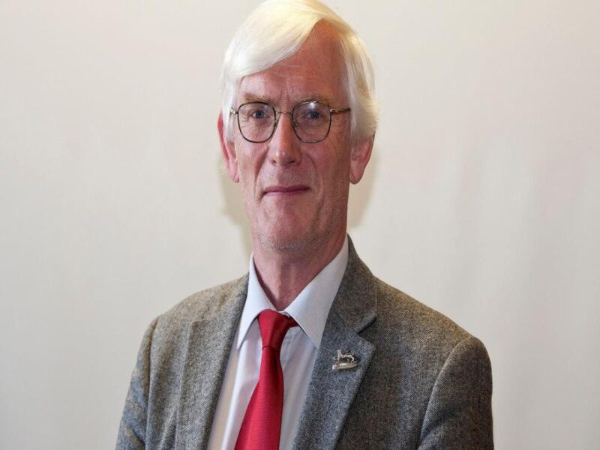Norwich Councillors: The Backbone of Local Democracy in Norwich, UK
Understanding the Role, Structure, and Impact of Norwich City Council Representatives

Norwich councillors play a pivotal role in shaping the local policies, community welfare, and development trajectory of Norwich, a historic and vibrant city in Norfolk, England. These elected representatives form the foundation of local governance, working collectively to ensure that the city operates smoothly, its resources are managed effectively, and its citizens’ voices are heard. This article provides a comprehensive overview of the Norwich City Council, exploring its structure, responsibilities, election process, and the vital contributions made by councillors to the daily lives of residents.
The Structure of Norwich City Council
Norwich City Council is the lower tier of local government for Norwich, a non-metropolitan district with city status. It comprises 39 councillors representing 13 wards across the city. Each ward elects three councillors, and elections are held in three out of every four years, with one councillor per ward elected during each election cycle. This staggered approach ensures continuity and consistent representation.
The council is divided into various committees and departments, each focusing on specific areas such as housing, environment, planning, finance, and leisure. Councillors are assigned to these committees based on their expertise, interests, and political alignment.
Roles and Responsibilities of Norwich Councillors
Councillors in Norwich have multifaceted roles. They are responsible for:
Representing the views and interests of their constituents.
Making decisions on local services and budgets.
Participating in council meetings and committees.
Scrutinising policies and holding the executive to account.
Assisting residents with local issues, concerns, and access to services.
They serve as the critical link between the community and the council, ensuring that local government remains transparent, accountable, and responsive.
Political Composition and Governance
As of 2025, the political composition of Norwich City Council includes representatives from multiple parties, with Labour and the Green Party holding the most significant number of seats, alongside Liberal Democrats and Independents. Due to recent shifts and resignations, the council is currently under no overall control, which has led to more collaborative and cross-party decision-making.
This political diversity reflects the evolving priorities of Norwich’s population and encourages a more dynamic governance model, fostering debate, negotiation, and a broader representation of ideas.
Key Functions of the Council
Norwich City Council, through its councillors, is responsible for delivering a wide range of essential services, including:
Housing: Managing social housing, tackling homelessness, and improving housing standards.
Planning: Overseeing planning applications, urban development, and sustainable growth.
Environmental Services: Waste collection, recycling, and environmental protection initiatives.
Leisure and Culture: Maintaining parks, libraries, museums, and promoting cultural activities.
Economic Development: Supporting local businesses, tourism, and job creation.
Each of these functions plays a vital role in enhancing the quality of life for Norwich residents.
The Election Process
Elections to the Norwich City Council follow a cycle where one-third of the council is elected each year over a four-year period, with one year having no election. Voters in each ward elect one councillor per cycle using the first-past-the-post system. This system ensures that elected councillors have direct accountability to their local communities.
Candidates may stand for election as representatives of political parties or as independents. Once elected, councillors are expected to serve a four-year term, during which they engage with constituents, attend meetings, and contribute to policy development.
Challenges Facing Norwich Councillors
Like many local authorities, Norwich City Council faces several challenges that its councillors must navigate:
Budget Constraints: Reductions in funding from central government have put pressure on council resources.
Housing Crisis: Rising demand for affordable housing continues to strain available stock.
Climate Change: Delivering on green initiatives while managing limited budgets.
Public Engagement: Encouraging greater civic participation in local decision-making.
Councillors must balance these complex issues while staying true to their commitments and representing their wards effectively.
Community Engagement and Representation
One of the most important roles of a councillor is engaging with the local community. Norwich councillors regularly hold surgeries, attend local events, and consult with residents to stay informed about local concerns. Their accessibility and responsiveness are key to building trust and fostering a sense of community involvement.
Through newsletters, social media, and face-to-face interactions, councillors maintain open lines of communication, ensuring residents are well-informed and empowered to contribute to local governance.
Leadership within the Council
The leadership of Norwich City Council includes a Leader of the Council, typically the head of the majority party or leading coalition, and a ceremonial Lord Mayor. The Leader is responsible for the overall strategic direction of the council, while the Lord Mayor represents the city at official events and promotes civic pride.
Cabinet members, appointed by the Leader, oversee specific portfolios such as finance, housing, or climate change. This leadership team works closely with council officers and the wider council body to implement policies and drive change.
Achievements and Initiatives
Norwich councillors have been instrumental in delivering impactful initiatives, such as:
Expanding affordable housing developments across the city.
Promoting renewable energy projects and sustainable transport.
Enhancing green spaces and investing in biodiversity.
Supporting local arts, culture, and heritage preservation.
Advancing equality, diversity, and inclusion across council services.
These achievements demonstrate the positive influence of dedicated and effective local leadership.
The Future of Local Governance in Norwich
Looking ahead, the role of Norwich councillors will become increasingly vital. As the city grows and evolves, so too will the expectations and responsibilities of those in public office. Key priorities will likely include:
Implementing net-zero carbon targets.
Expanding digital access and smart city technologies.
Fostering inclusive economic recovery post-pandemic.
Deepening citizen engagement through participatory democracy models.
Adapting to these trends will require innovation, resilience, and strong local leadership.
Why Norwich Councillors Matter
Councillors are the bedrock of local democracy. Their work may often go unnoticed on the national stage, but their impact on everyday life is profound. From ensuring your bins are collected on time to deciding on major housing projects, councillors shape the environment in which residents live, work, and thrive.
Their dedication, accountability, and passion for service make them indispensable to the functioning of Norwich as a community-focused and forward-looking city.
Conclusion
Understanding the role of Norwich councillors is essential for anyone living in or connected to the city. These individuals are more than just elected officials—they are advocates, decision-makers, and community leaders who influence every aspect of life in Norwich. Their efforts ensure that the city remains inclusive, sustainable, and vibrant.
As challenges and opportunities continue to emerge, the importance of engaged, informed, and empowered councillors will only grow. By supporting them and participating in local democracy, residents can help shape a better future for Norwich and generations to come.



